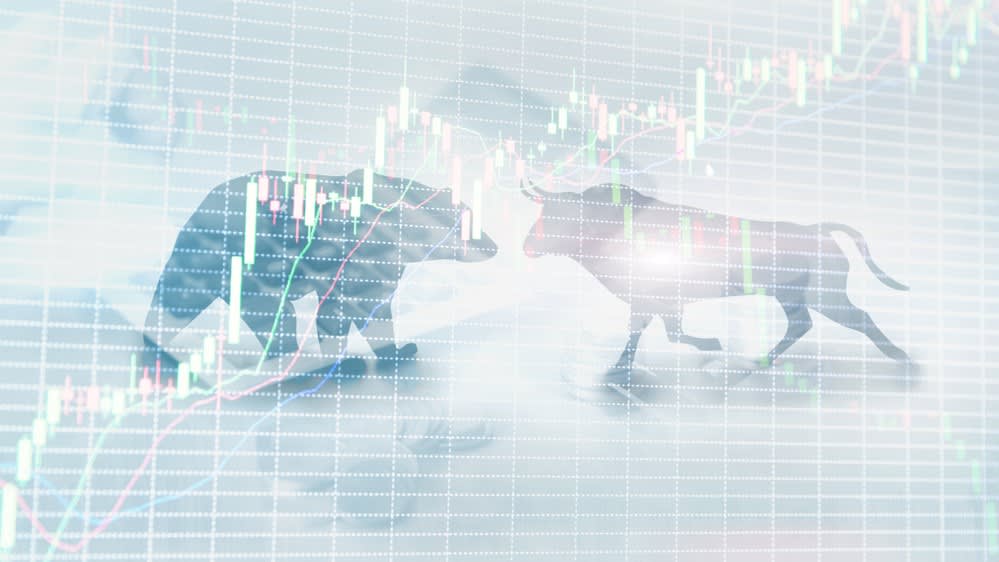Making the most of market volatility
Savvy traders can use Contracts for Difference to cap their risk and capture opportunities amid the current wave of erratic price fluctuations.

Traders can use CFDs to access a wide range of asset classes, such as shares, indices, commodities and forex. Photos: Shutterstock
Investment markets have experienced extreme levels of volatility in recent years. The pandemic, geopolitical tensions and, more recently, aggressive tightening by central banks to tame inflation have sent investors on a roller-coaster ride of wild price swings across different asset classes.
In equity markets, for instance, the widely watched S&P 500 Index plunged over 20 per cent year-to-date earlier this year, before rallying in recent weeks.
“The low visibility on growth and the inflation outlook have left market participants highly sensitive to any clues pertaining to economic conditions, which leaves markets susceptible to wild fluctuations,” said Mr Yeap Jun Rong, a market strategist at IG Asia.
Another factor adding to volatility is the rise of social media as a source of information – or at times, disinformation – for investors. For instance, last year’s meme stock saga was heavily driven by activities on Reddit, Discord and YouTube. Meme stock trading refers to a situation where companies see their value driven more by social media attention than fundamentals.
GameStop is widely regarded as the first meme stock. The video game retailer’s stock price rose as much as 100 times last year over the course of several months as investors from online communities piled into the company. In June, global beauty company Revlon gained more than 50 per cent in heavy trading in one day on the back of intense retail investor interest.
KEEPING UNCERTAINTY IN CHECK
To navigate heightened volatility, experts advise traders to adopt appropriate risk management tools and strategies.
For instance, Contracts for Difference (CFD) is a derivatives product that allows one to trade different instruments without owning the underlying asset. In a typical CFD trade, a client and a broker agree to exchange the price difference in the current value of an underlying asset and its value at the end of the contract.
CFD provider IG offers a risk management tool known as Knock-Outs, where the trade closes automatically if the underlying market price reaches the Knock-Out level. This helps to protect against slippages and allows you to better manage your risks by pre-setting your maximum loss, said Mr Yeap. By providing guaranteed stops, IG ensures that a trade will always be closed at the exact level you set, with a premium incurred only when the guaranteed stop is triggered.
“Knock-Outs and guaranteed stops aid to instill discipline in your trading and ensure that you do not lose more than what you are willing to risk,” explained Mr Yeap.
When opening a Knock-Out position, you first decide whether you are buying a bull or a bear. If you believe that the market price is going to rise, you will buy a bull and set a Knock-Out level below the opening market price. If you foresee that the market price is going to fall, you will buy a bear and set a Knock-Out level above the opening market price.
CAPITALISING ON PRICE MOVEMENTS

Beyond managing risk and volatility, CFDs are designed to help traders capture opportunities that may emerge in a wildly swinging market. Specifically, traders can use these instruments to access a wide range of asset classes, such as shares, indices, commodities and forex. Traders can trade at the buy price of a CFD if they think that the market is going to go up, and at the sell price if they think it is going to go down.
In addition, CFD traders are able to open a position with a lower initial outlay than buying the asset outright. This is known as leverage, where you only need a fraction of your trade’s full value to open a position, freeing your capital for other uses.
Added Mr Yeap: “During current periods of increased market ambiguity, investors with long-term asset holdings can also use CFDs to hedge against their portfolio to mitigate any near-term market moves to the downside.”
Amid today’s uncertain investing landscape, traders might do well to take advantage of CFDs and their risk management features to make the most of market volatility.
Download IG’s free Bloomberg e-book – Making the Most of Volatile Times.
This advertisement is issued by IG Asia (Co Reg No 200510021K) for general circulation and informational purposes only. IG Asia is regulated by the Monetary Authority of Singapore and holds a capital markets services licence for dealing in capital markets products that are over-the-counter derivatives contracts and is an exempt financial adviser.
All forms of investments carry risks and trading CFDs may not be suitable for everyone. CFDs are leveraged instruments and can result in losses that exceed deposits, so ensure that you fully understand and are aware of the risks and costs involved. Refer to the Risk Disclosure Statement and Risk Fact Sheet available at IG.com/sg.
IG provides an execution-only service. The information in this advertisement does not contain (and should not be construed as containing) investment advice or an investment recommendation, or an offer of or solicitation for a transaction in any financial instrument. IG accepts no responsibility for any use that may be made of these comments and for any consequences that result. You should consider your specific investment objectives, financial situation and particular needs before making a commitment to trade, including seeking advice from an independent financial adviser, under a separate engagement, as you deem fit.
This advertisement has not been reviewed by the Monetary Authority of Singapore.
















